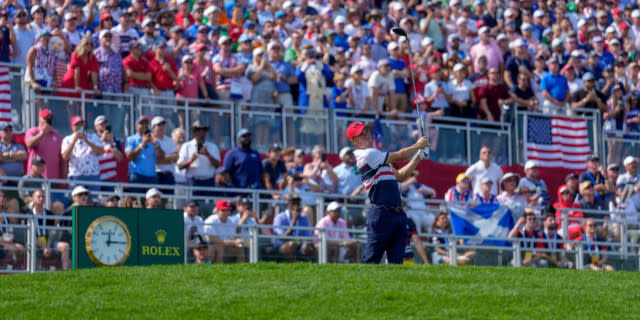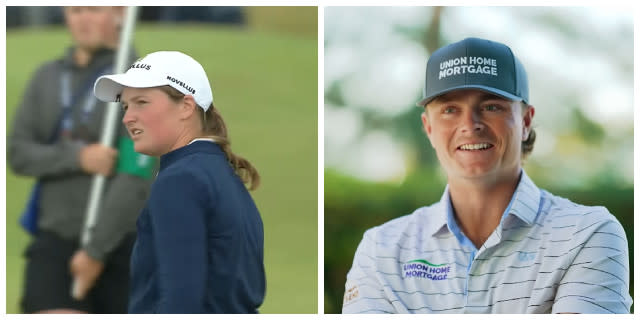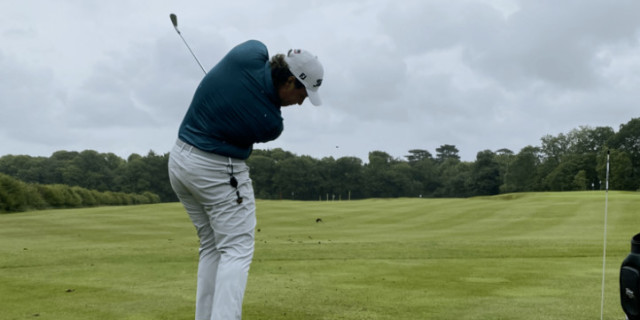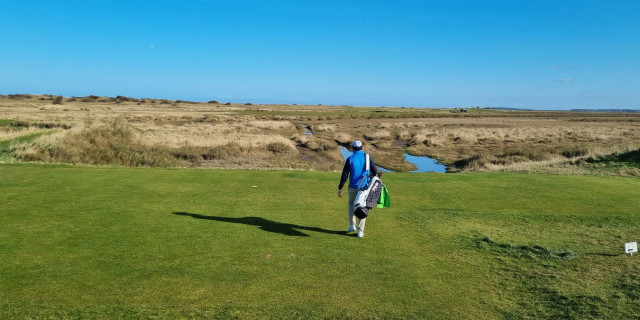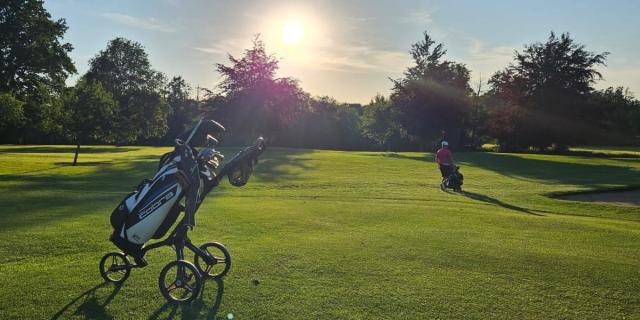
PGA Health for Handicap - Golfshake Exclusive
What is it?
 Many of you and myself included could watch a professionals swing on T.V all day long. Or if you’re at an event you awe at the way they hit the ball on the range and eventually take that onto the course.
Many of you and myself included could watch a professionals swing on T.V all day long. Or if you’re at an event you awe at the way they hit the ball on the range and eventually take that onto the course.
Hours of practice has gone in to perfecting the golf swing, shaping the shot, the execution and controlling the ball.
Yes they’re not all the same but most of the time they produce results that amateurs could only dream of.
What we don’t realise, is what goes on behind closed doors, how do they hit the ball so far and so consistently?
Up until a few years ago golf had been left behind in terms of the golf swing, the manufacturers have been trying for years to advance their technology to the highest peak of performance.
However, look at the golf swing now and even go back 40 or 50 years and on top you see muscle power, in recent years better equipment and of course raw talent.
But underneath all that there is nothing more than science and technique which is why so many top golfers are now turning to sports science to help with not only the mental side of their game but the physical side as well.
Eanna Rushe, founder of BioSports Technology which specialises in Biomechanical analysis in golf and other sports explains why so many amateurs don’t realise they are going wrong:
“Biomechanics is the analysis of human motion that blends physics and physiology. It allows us to measure movement patterns and body segment speeds in the golf swing.
“For example, if you videotape your golf swing you don’t know how fast your hips are rotating or how fast the club shaft is releasing. Doing a biomechanical analysis of your golf swing allows us to quantify your golf motion in terms of how fast each body segment is moving, how you are creating power and if there are significant power leaks.
Which is why, when you look at a biomechanical model of a tour pro or long drive champion it becomes pretty apparent why they drive the ball so far. Their motion is highly efficient with very little power leakage.”
So do we actually know what sports science is and what it involves? I was very intrigued as to what went into a session and what pros would work on. So I went to The PGA National Training Academy at The Belfry to be put through my paces.
Belfry
I was met by Ben Langdown, Training Executive for the PGA who gave me a great insight into how important sports science is to the game of golf and how The PGA incorporate every aspect into their training programme for Assistant Pros and indeed professional golfers:
“It’s probably one of the most current areas at the moment on our training programme, that and custom fitting are the latest additions in the last few years. Sports science has become a massive part in both playing and coaching.
“We’re now training our Assistants to have an understanding in sports science whereas even just as little as five years ago there were only a few hours in their curriculum. They now have a full day of Sports Science delivery on their residential sessions, and before that there was nothing in this area.
“Traditionally there was the thought that it didn’t really matter, it wasn’t important, strength training would reduce flexibility in the golf swing, so people serious about golf shouldn’t do any strength training but now that myth has gone out of the window. The likes of Tiger Woods have made working out in the gym as well as playing golf possible and worthwhile.
“We now teach our Assistants anatomy & physiology leading into strength training, as well as psychology, nutrition, skill acquisition, bio-mechanics and tell them that each individual will learn differently. We are trying to teach them to approach every client differently and give feedback in a way that their client will understand in order to pick up the skills quicker.”
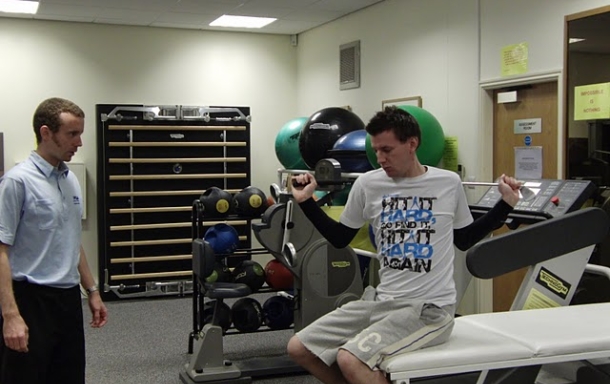
When you think back 10-15 years ago or possibly longer and the likes of Nick Faldo hiding the fact he was seeing a psychologist in case people thought he was a ‘nut job’. It’s hard to think now that professional golfers don’t have a psychologist in their entourage. Times have certainly changed and will continue too in the future.
It comes down to the grand old question, what came first the chicken or the egg? A leading European player who has undergone swing changes in the last couple of years was in a predicament when his new coach wanted him to make the changes. Problem was his body would not physically let him or it would take a good few years for the body to re-shape if you like in allowing him to make the swing he wanted.
Which brings me back to the question, for someone starting out in golf, do they first do all the stretches and get the body at the full flexibility which is capable of the perfect golf swing or do they let nature take its course and let the raw talent come through which can then be worked on after?
“Ideally in a perfect scenario a beginner coming to a coach would want everything” Langdown said.
“At first it will be quite intimidating but if that person had a sports scientist, nutritionist, psychologist, strength and conditioning coach, and was even willing to take visits to a vision coach and a podiatrist it would allow them to understand the demands of what a golfer would need.
If all of those were in place, a complete beginner could come in and start to work on the strength and the body movements to hopefully in theory perfect what would be the perfect golf swing.”
For a complete beginner to have all of those attributes they would need to be incredibly rich or have the foresight to think that way even before picking up a golf club which may never happen.
TPI
Although seeing a physio for a sporting injury is not new, the whole concept of using it to help with the golf swing or providing information into how it helps the swing started on the West coast of America.
The Titleist Performance Institute (TPI) in Carlsbad, California was originally set-up to sell golf balls. However, to sell more balls the director at the time realised they had to keep people involved in the game but also bring new people in, so they came up with this idea that the coach has to have a understanding of the physical limitations of the player, therefore came up with a series of different screening tests which the PGA have adapted and put into their own training programme.
This allows the coach or strength and conditioning expert to have a look through the limitations and assess what physical restrictions are going to have an impact on the swing and from there if the client can’t or won’t do any work towards getting the body in the right place then the coach will have a look at the report and say to himself that he has to work around this.
So a fully qualified coach that understands the screening process and how the body works should be able to build or improve your swing around your limitations. Or send you off to a specialised expert to work on those limitations.
The training on these tests has been around now for four or five years so there are more and more Professionals and coaches around the world that understand all the aspects that help the coaching of a golf swing.
Physios have been doing it for years and years but there was nothing in place where the golf pro could go through a simple package and assess local members within their lessons to understand their physical ability. So the PGA has incorporated an adapted TPI simple step-by-step screening process which has now empowered the Pro to understand about the swing and the body and the way it affects one another in order to work around any physical limitations.
Not for Everyone
So all of this talk of going to the gym and working out is good for the golf swing? Great. But what if you don’t work out and don’t like going to the gym? Does it make you bad at golf? No. Does it hinder your performance? No, not if you’re used to swinging the golf club like you have done for the past how many years. So why do it?
 My two exceptions are John Daly and Carl Pettersson. You wouldn’t say that these are primed athletes but they get the job done.
My two exceptions are John Daly and Carl Pettersson. You wouldn’t say that these are primed athletes but they get the job done.
I remember a quote from Daly that sums him up: “Why go to the gym, work really hard and throw up when I can go to the pub, drink 10 pints of beer and throw up? I’ve never liked the gym.”
He’s done pretty well in his career, a double major winner being the high amongst many more lows.
Langdown argues the fact that could he have been much better and won more if he had got himself in shape earlier in his career?
“It takes up to 10,000 hours of work and practice to become an elite sports athlete. In terms of when you first start playing the sport through to elite level. The swing would have been grooved over a period of time so if they drop a load of weight they can’t expect the swing to be there straight away.
“My argument is that training is always going to help but have they got the time and patience to put it into practice, some players don’t.
“The issue with losing weight and then the swing changing is true because as soon as you remove some extra pounds around the stomach area you have more room to manoeuvre the club, and the arms have more room to work and come through therefore allowing more body turn. You probably have more range of movement if you’re doing the training and the right exercises. However if you have the extra movement, you will need some technical input to make the swing work.”
This brings me to Carl Pettersson, the big Swede who was in his words is a ‘consistent top-30 money winner’ on the PGA Tour until he started to lose weight.
He lost 30 pounds and his golf game completely left him because he said his swing felt strange and he wasn’t confident about hitting the ball. This is probably down to him not having the right coach telling him if he wanted to lose weight he need to go about it in a different way.
So when can you start to learn about bio-mechanics and the science behind golf? Langdown says that you are never too young to start learning about the body:
“There’s no reason as to why juniors from any age or even when they first pick up a club can’t start to learn about the way the body moves and why it is important.
“The coach has to do it in a fun way that they will understand and enjoy. For example, they could try incorporating fundamental movement skills into games just so they know what is trying to be achieved.”
When they start to get older then you can start to add more bits of information in various ways. In Switzerland, if a boy in their international set-up starts to have growth spurts they are sent back down to county level until the coaches believe its right to send them back up. Growth spurts are known to affect the co-ordination and balance which will have an impact on their game.
Professionals that have come through the PGA Foundation Degree in Professional Golf can’t rate it highly enough. The likes of Ian Poulter and Alison Nicholas are fully qualified PGA Pro’s. This training is one of the main reasons behind
Poulter not having a coach as he feels he can coach himself by watching videos and using the techniques he learnt on the course.
The courses (full time 3 year BA (Hons) degree in Applied Golf Management Studies and 3 year distance learning Foundation Degree in Professional Golf) are both ran in conjunction with the University of Birmingham and are the only degree programmes of their kind in the world. It gives you the chance of combining a high-level applied theoretical degree programmes with membership of the PGA.
Across all three years of the full time AGMS degree you cover modules in the areas of applied sports science, materials science, coaching theory and business management delivered by specialist staff from the University and the PGA. You also complete three PGA-assessed vocational placements in a golf environment, which are a requirement for membership of the PGA.
Professional Golfer Paul Streeter who has competed on the European Tour and at the Open this year at St Andrews has just completed his three years on the Foundation Degree:
“At the start I honestly thought it was complete nonsense but this is the only time I have been happy to have been proved wrong.
“The information you take on board is unbelievable and its stuff even after being a pro for many years I just didn’t think about incorporating into my game.
“I coach a lot now and the people I’ve seen since I’ve finished the course are amazed by the changes I make or suggest to them as again they didn’t really know what impact or lack of in many cases it was having on their swing. “
Future
So what of the future? How far can sports science go to help players with not only there golf swing but there all-round game?
Hopefully the next instalment at the PGA Training Academy is a new 3D system which captures the swing from every angle possible and is a brilliant piece of kit that allows the coach to see things within the swing they couldn’t pick up with a camera or just with their naked eye.
Professionals and Assistants will be trained to understand the data that comes from 3D sessions, so when a player comes back from a session with the data, a coach can look and see exactly what area they need to work on.
Although they are being trained to understand the theory behind training they are encouraged not to work on the physical restriction that they see in golf swings. They should send their clients off to experts who can work intensively on that area.
Langdown says he would like to see coaches work more closely with sports science experts:
“Coaches need to not feel threatened by sport scientists and embrace the ideas and expertise we come with. I’d like to see more of a team approach to help the golfer with their game which most of the professionals are doing in this day and age.”
The future is certainly bright when it comes to the possibilities of what could be around to help golfers of the next generation but don’t be fooled or put off by that. There could be something or someone out there right now that could dramatically help your game.

Be part of the action with a selection of unique golf tournament experiences, from playing in a pro-am with the stars to watching the action at golf’s most illustrious events. Whether it’s the Masters or The Open, The Ryder Cup or WM Phoenix Open, build your own bespoke package with the experts at Golfbreaks.com.

